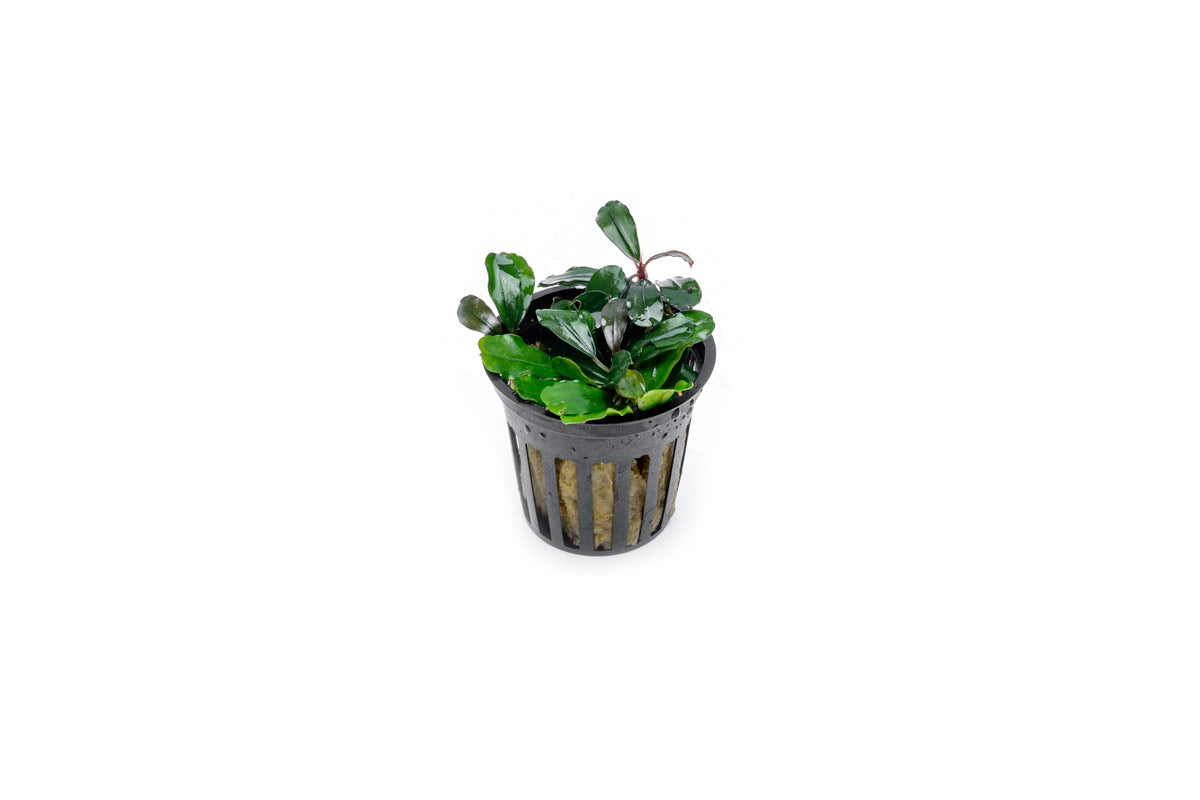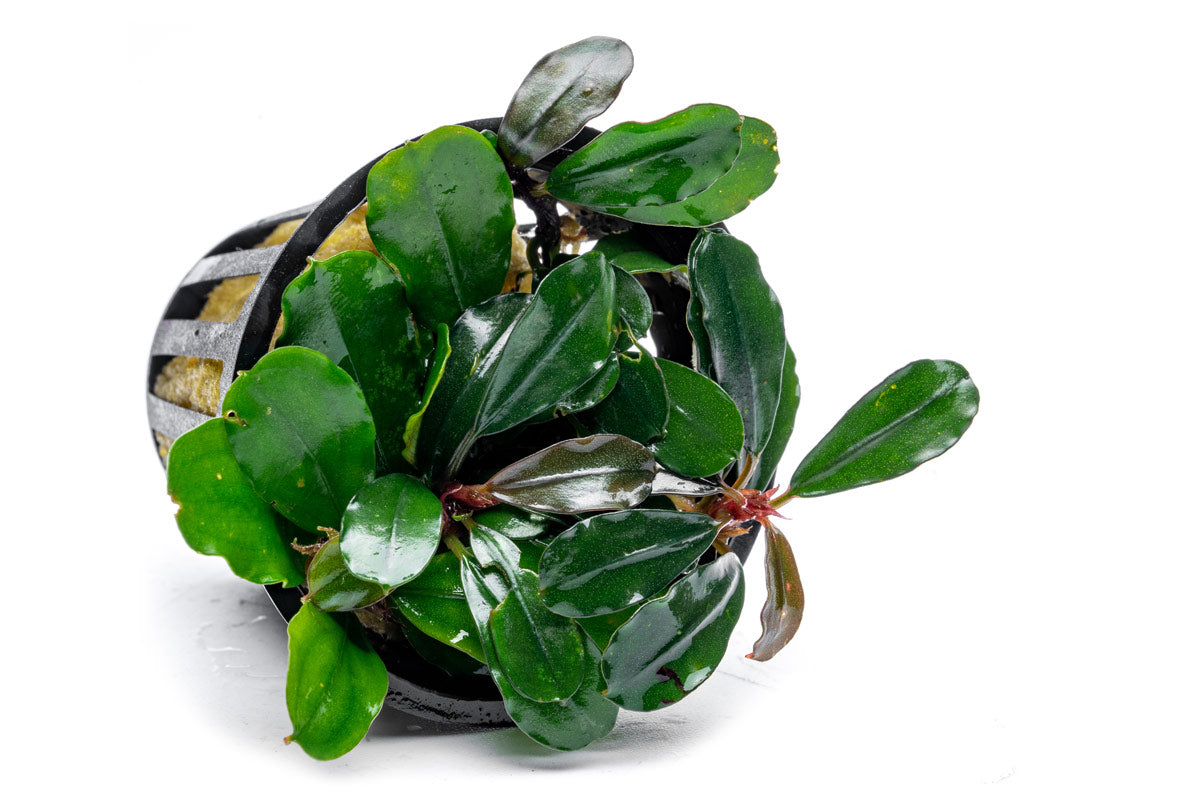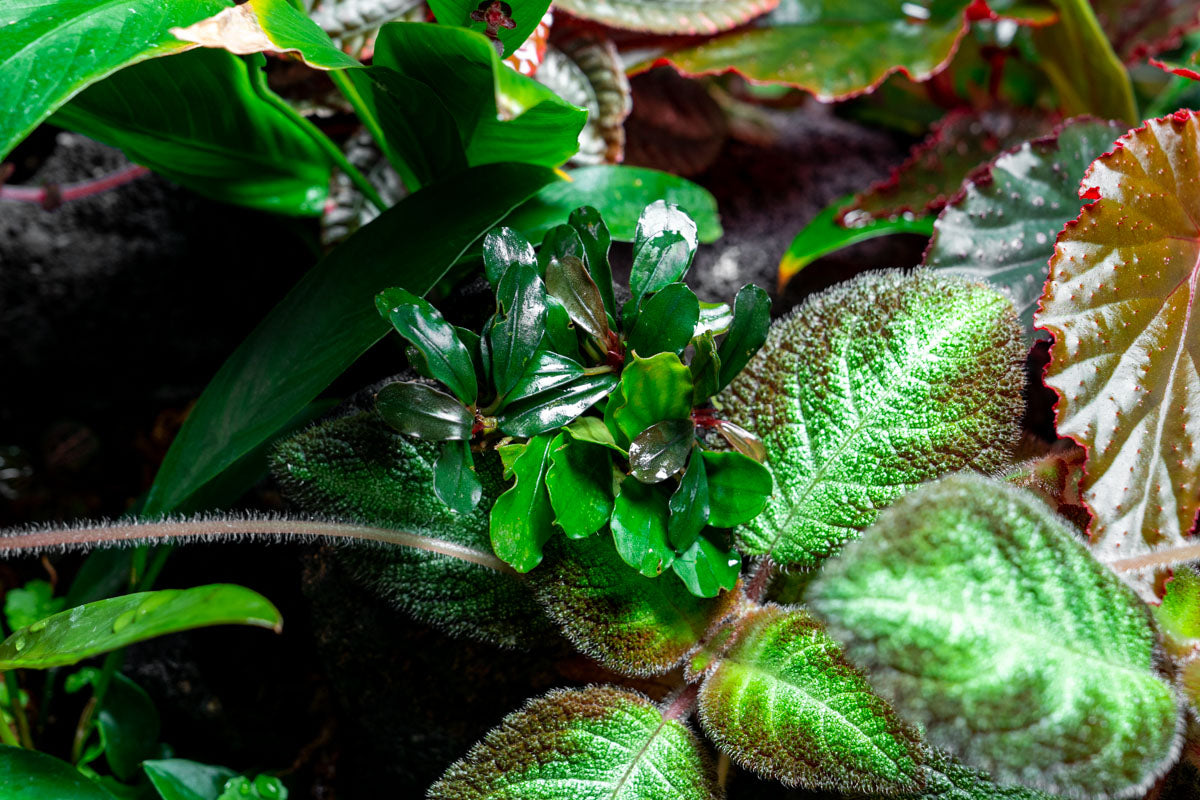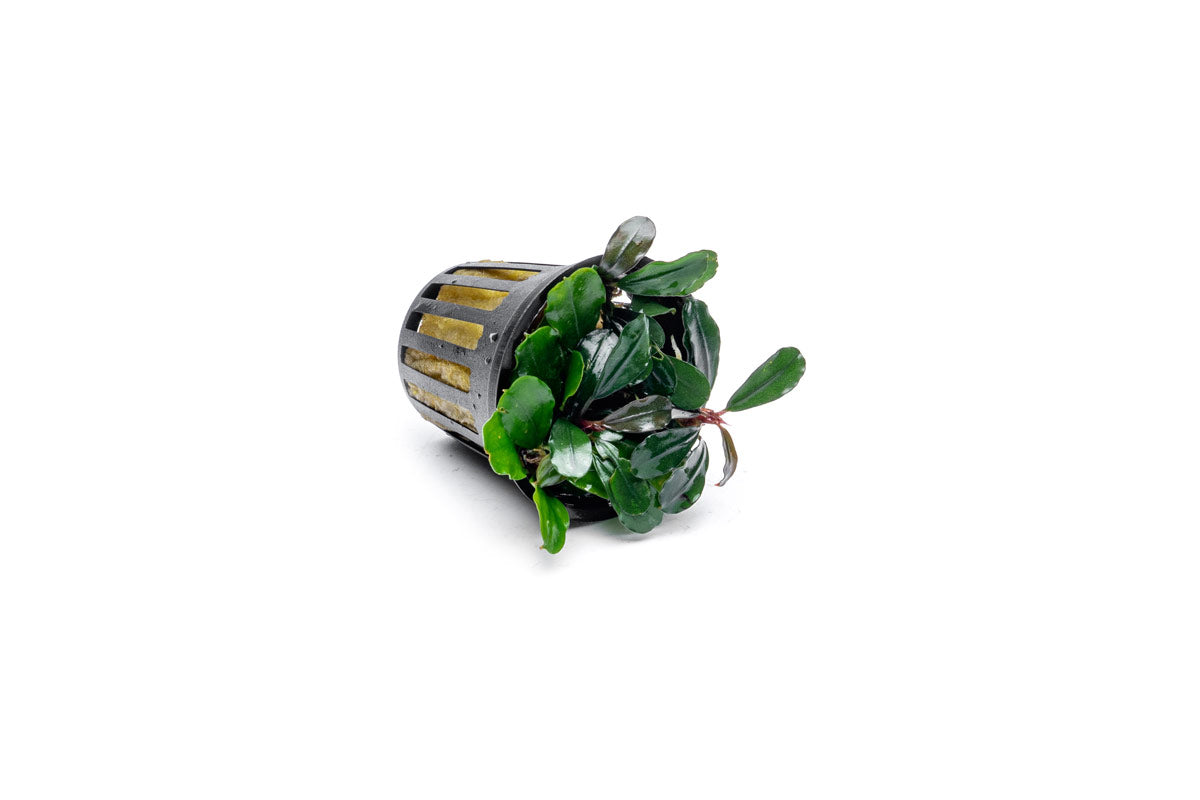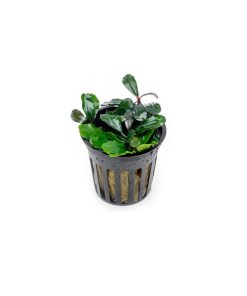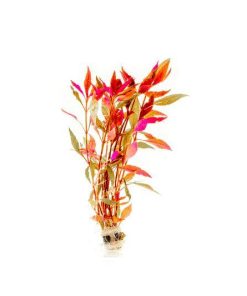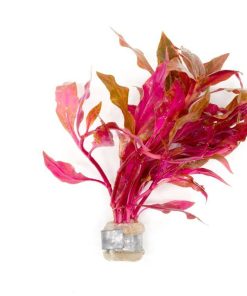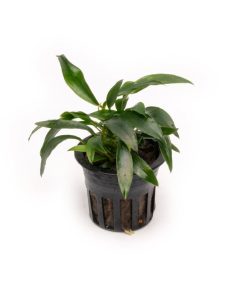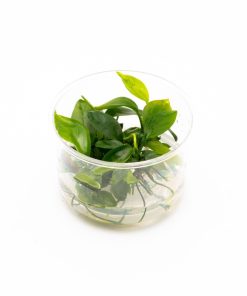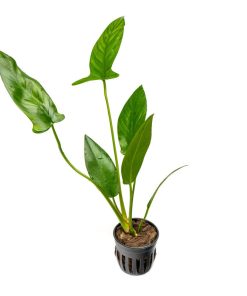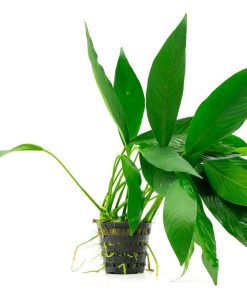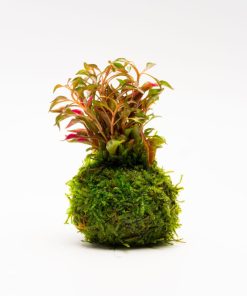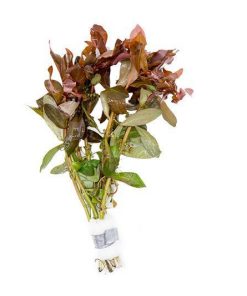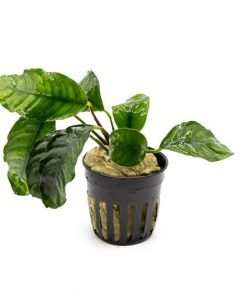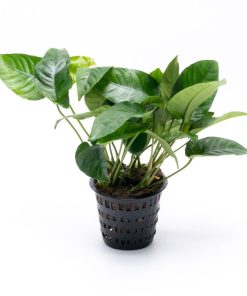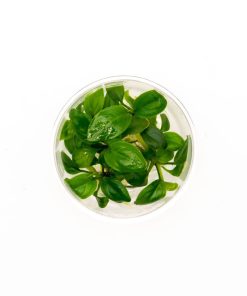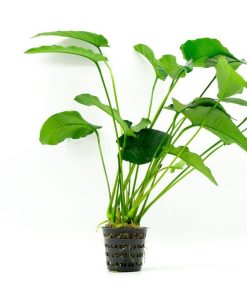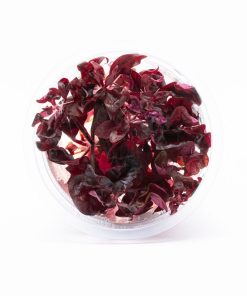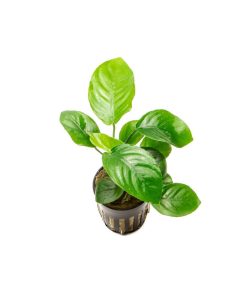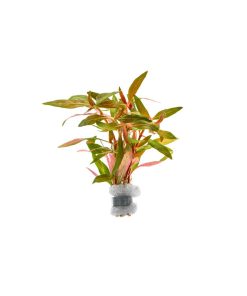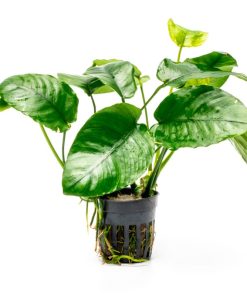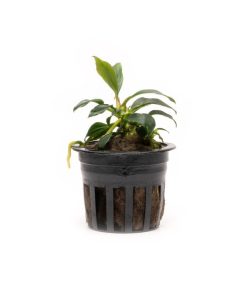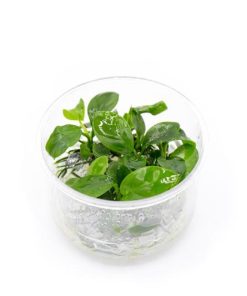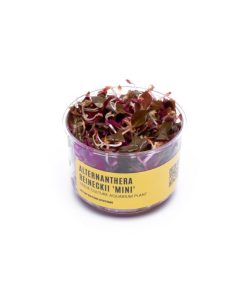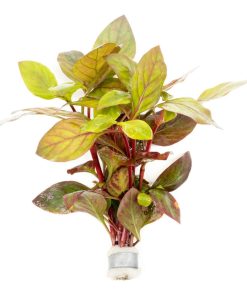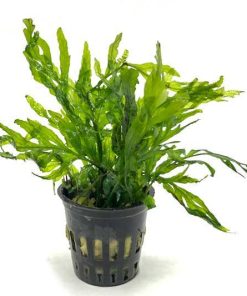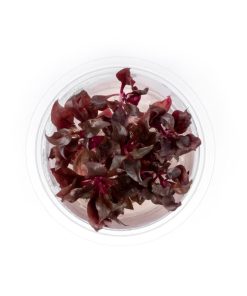Bucephalandra Brownie Jade Pot BUCE
$ 24,99 $ 14,99
Common Name: Bucephalandra Brownie Jade Pot
Bucephalandra Brownie Jade Pot features round leaves with pronounced midribs running down the center. The older, more mature leaves can range from light to dark green but newer leaves sometimes show hints of blue with specks of shiny white dots. All variants of Bucephalandra are very slow-growing, with new leaves sprouting from long, thin rhizomes. It can be propagated by separating the rhizome gently and attaching it to driftwood and rocks using super glue gel or thread.
It thrives under low to moderate lighting and adapts well to various water parameters. Bucephalandra can be grown submerged or emersed. Like Anubias, Buce plants have rhizomes that attach and grow on solid surfaces. While it attaches exceptionally well to rocks, it can also flourish on driftwood and other substrates. When placed in the substrate, ensure only a portion of the Buce plant is under the substrate while keeping the rhizome exposed, as burying it can lead to rot.
Key Features & Important Notes
- Bucephalandra is an epiphytic aquarium plant so it can be attached to aquarium hardscape.
- Do not plant Bucephalandra in substrate and cover the rhizome. This will cause it to melt and rot.
- Bucephalandra’s final size, coloration and growth rate are dependent upon the condition of the aquarium Photos are a representation of what you will receive and may vary.
- Please be sure to remove this plant from its pot. Remove the cotton surrounding the roots and plant into a quality substrate. For instructions on how to properly prep “potted” aquarium plants, click here.
- Do not make drastic changes to the aquarium. Unstable parameters will result in melt and rotting of the aquarium plant.
- CO2 injection will yield better growth.
Care & Additional Information
Listed information should be treated as general guidelines only. We encourage you to do thorough research before keeping any type of livestock.
Family Name: Araceae
Origin: Borneo
pH: 6-7.5
Skill Level: Easy
Light: Low to Medium
Co2: Not necessary but recommended
Propagation: Separate by rhizome
Growth rate: Slow
Fast Shipping with Professional Packaging
Our long-standing relationship with UPS FedEx DHL and other carriers around the world allows us to offer various shipping options. Our warehouse staff are highly trained to package your goods exactly as per the specifications we provide. Your goods are thoroughly checked and secured properly prior to shipping. We ship to hundreds of thousands of customers daily in different countries. The fact that we're dedicated to becoming the largest online retailer in the World is obvious. Warehouses and distribution centers are located in Europe as well as the USA.
Please note that orders with more than one item are subject to a processing period that is based to the specific item.
Before shipping, all ordered products will be thoroughly inspected. Most orders are shipped within 48 hours. The time to deliver varies from 3-7 days.
Returns
The stock is dynamic and we do not completely manage it because multiple stakeholders are involved, including our warehouse and factory. The stock can change at any moment. Be aware that your order will be unable to fill once you've placed your order.
Our policy runs for 30 days. If you don't receive your product within the 30 days period, we are not able to provide a refund or an exchange.
The item must not be used, and it must be in its original condition. The item must be in its original packaging.
Related products
Aquatic Plant
Aquatic Plant
Aquatic Plant
Aquatic Plant
Aquatic Plant
Aquatic Plant
Aquatic Plant
Aquatic Plant
Aquatic Plant
Aquatic Plant
Aquatic Plant
Aquatic Plant
Aquatic Plant
Aquatic Plant
Aquatic Plant
Aquatic Plant
Aquatic Plant
Aquatic Plant
Aquatic Plant
Aquatic Plant
Aquatic Plant
Aquatic Plant
Aquatic Plant
Aquatic Plant
Aquatic Plant
Aquatic Plant
Aquatic Plant
